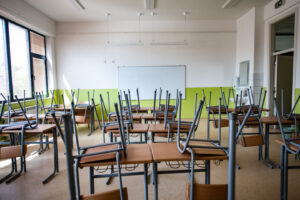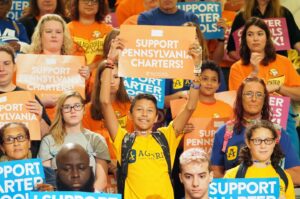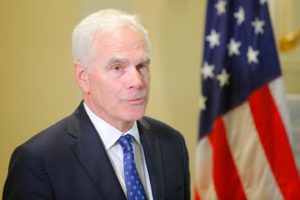No going back? Americans’ engagement, trust in public schools is irreparably shaken, report shows
Three years after the advent of COVID-19, public education has lost what may be permanent amounts of both students and trust, a new report says.
The report by the National Alliance for Public…

Three years after the advent of COVID-19, public education has lost what may be permanent amounts of both students and trust, a new report says.
The report by the National Alliance for Public Charter Schools (NAPCS) highlights enrollment trends in public schools from 2019 to 2022, and indicates that change in K-12 education is here to stay.
The report compares enrollment in public charter schools and traditional, district-run public schools. Unlike traditional public schools, public charter schools are not beholden to a district board but rather an independent board, though they still follow government regulations and are tuition-free.
According to NAPCS, public charter schools were the only type of public school to increase enrollment during the pandemic, experiencing growth in 39 of the 41 states that host public charters.
Nationwide, public charters increased enrollment by 7%, while traditional public schools decreased by 3.5%. States that boasted the most growth in charter school enrollment include Washington (47%), Mississippi (37%), Oklahoma (30%) and South Carolina (25%).
The report also showed that pandemic-era education changes transcended racial demographics. Hispanic students increased their charter school enrollment by 9%. Black and white students increased theirs by 5% and 3% respectively.
Notably, though COVID-19 policies have been largely discarded, most parents have no desire to return to the pre-pandemic model of education.
In a report from August, NAPCS analyzed parent sentiment and found that the vast majority of parents – nearly 80% – became more interested and involved in their child’s education during the pandemic. And an overwhelming 89% said switching schools was a positive change for their family.
“Public education is a public trust, and these enrollment numbers suggest that trust may have been shaken,” NAPCS says in the report. “Families are not re-enrolling their children in schools that never met their needs in the first place.”
While public charter schools did experience impressive growth, NAPCS acknowledged that private education was the main refuge for families fleeing traditional public education. Indeed, 1.5 million students left traditional public schools but only 240,000 enrolled in public charters.
Either way, public schools’ losses are other schools’ gains.
“The only clear pattern we could find is that charter school growth happened almost everywhere, as did growth in homeschooling and private schools,” the report concluded. “We saw it in urban, suburban, and rural communities. We saw it among Hispanic, Black, and White students.”



